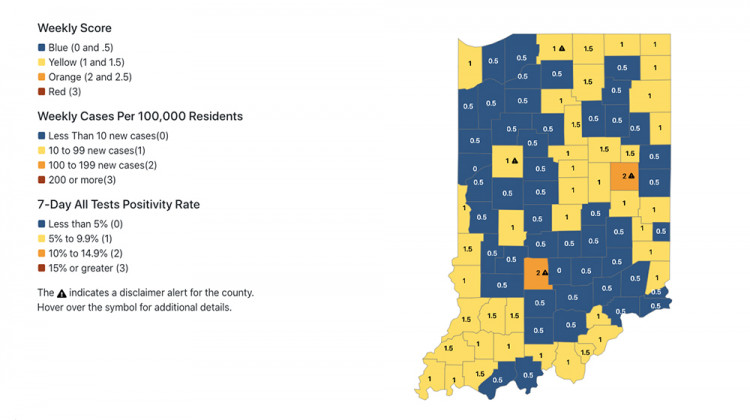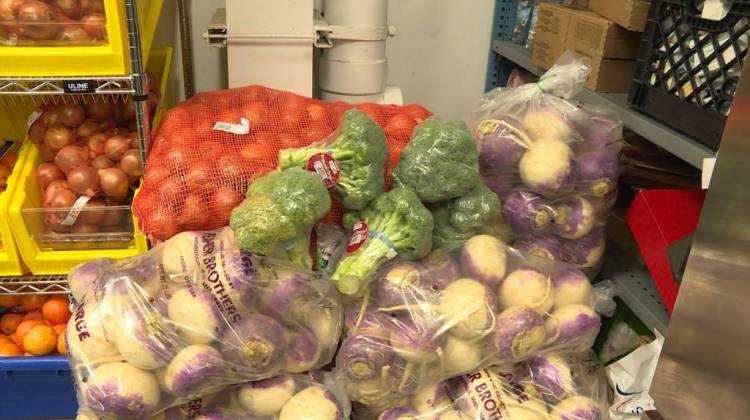INDIANAPOLIS (AP) — The counties that include Indiana and Ball State universities are listed as the highest-risk locations for coronavirus infections on the state health department’s updated county-by-county map released Wednesday.
Monroe County, which includes the main Indiana University campus in Bloomington, and Delaware County, which includes Ball State in Muncie, are the only two listed with the health department’s orange rating for moderate to high coronavirus spread after seven counties had that rating last week. No counties were listed with the highest-risk red rating in either week.
The remaining 90 counties received yellow or blue ratings based on the number of new cases per 100,000 residents and the percentage of tests confirming COVID-19 infections.
State health commissioner Dr. Kristina Box attributed the ratings for Monroe and Delaware counties to congregate living settings and large-scale university testing within the counties.
Health officials are now “especially concerned” about those aged 18 to 22 years, Box said during a news conference Wednesday. Data show sharp increases in the age group as students have returned to campuses and universities are requiring more extensive testing. Case counts since early August have trended down for all other age groups in the state.
But the spread of COVID-19 among the even younger population is also of growing concern, Box said, given that Indiana has seen a “steady increase” in the percentage of total cases among children throughout the pandemic.
While the majority of COVID-19 cases in Indiana near the beginning of the pandemic were among those over the age of 50, the pendulum has shifted. Now, two-thirds of the state's cases are recorded by those under age 50, and half of all new cases are in those under 30 years old, Box said.
Although cases among K-12 have remained relatively stable since late July, Box said almost 19 percent of new COVID-19 cases are among high school students. Box said this is likely because teenagers and young adults are less likely to observe social distancing, don’t wear their masks regularly and have larger social bubbles.
“As more schools return in person, we need to pay attention to these data and recognize that peer-to-peer transmission is occurring more frequently in teenagers and young adults,” Box said. “We need our younger Hoosiers to understand that they are not without risk."
Still, state officials said they aren't recording significant numbers of COVID-19 hospitalizations among children and young adults.
And while she said it's still “a little bit early” to make decisions about Halloween festivities, Box said she thinks trick-or-treating “can occur safely” in counties and communities where COVID-19 infection rates are low.
“It’s about washing your hands carefully, right? It’s about not letting your kids dig into that pumpkin in that bucket and eat it as they’re walking around unless their hands have been washed,” she said. “I think there’s a lot of safe ways to do it. I don’t think big Halloween parties with lots of kids at one time is a good idea, but we’ll try to come out with some more direction or advice prior to that time.”
Box said the state wants to be able to present preliminary data about COVID-19 cases in schools by Sept. 30. The hope is for K-12 schools to report daily the number of students and staff that have tested positive for the coronavirus, Box added, and her goal is that future updates to county-by-county COVID-19 statistics will specifically designate cases at any colleges within those counties.
Casey Smith is a corps member for the Associated Press/Report for America Statehouse News Initiative. Report for America is a nonprofit national service program that places journalists in local newsrooms to report on undercovered issues.
 DONATE
DONATE







 Support WFYI. We can't do it without you.
Support WFYI. We can't do it without you.